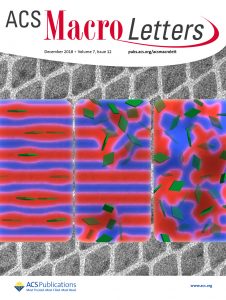ACT for the Human Habitat
To enable coatings that will transform the human habitat, the three ACTs take advantage of the versatility provided by polymers, nanoparticles and their mixtures to create coatings with tailored chemistry, surface texture and function. By imbuing coatings with structure and function via tailored chemistry, surface texture, or by embedding (nano)particles, we design active coating technologies (ACTs) to transform passive surfaces into functional devices. These ACTs address societal needs impacting humanity on a global scale, including access to clean water, prevention of the spread of disease, and the creation and storage of energy. To have maximum impact, we aim to design these active coating technologies to be inexpensive, achievable over large surface areas, and implementable under challenging settings, wherever humans reside. As a central theme, we focus on sites of natural disaster, where clean water, sanitary conditions and energy are in short supply. Our technologies will also have transformative impact in the rehabilitation of old/outdated buildings, making them more self-sustaining and energy-efficient without the need for complete re-construction.
To achieve these goals, we have assembled an international team of scientists and engineers with complementary expertise from the US (Penn, ASU, Villanova, BMC) and GIANT (Grenoble, France) and its six affiliate institutions.
To enable active coatings that will collect and filter water, ACT 1 seeks to understand how the length scales, geometry, and surface energy of hierarchically structured coatings influence equilibrium and non-equilibrium wetting, droplet growth and water transport.
To enable active coating technologies that suppress surface-mediated transmission of disease, ACT 2 aims to relate surface mechanics, texture (ACT 1) and biomolecule density/orientation to the adhesion, proliferation and killing of microorganisms.
Perhaps the most challenging aftermath of a natural disaster is the need for energy in the form of electrical power. ACT 3 is focused on ACTs for light harvesting, energy conversion and storage. ACT 3 develops flexible coatings to enhance solar light collection based on semiconductor and organic-inorganic perovskite nanoparticles doped with rare earth elements. ACT 3 also aims to develop the next generation of solid polymer electrolytes for lithium ion technology.
Five unifying principles integrate the three ACTs to create a unifying environment within which to train scientists and engineers and to enrich our research. The first principle is the commonality of materials and approaches; all three ACTs utilize hybrid, structured coatings comprising polymers, textures and (nano) particles. The second principle is the importance of theory and simulation to guide research by focusing on relevant parameter spaces, for example, appropriate particle type, size, shape, and surface chemistry. This approach will predict the assembled particles/polymers structures that directly impact behavior, including wetting, bacteria adhesion, and energy conversion. The third principle unifying the ACTs is a common need for mechanical characterization and robustness; to be effective, advanced coatings technologies must be robust under environmental stress (strain, humidity, temperature). This is particularly relevant near sites of natural disasters. Promising coatings will undergo in-situ nanomechanical measurements so that structural changes can be correlated with changes in their function. The fourth principle is the novel methods for film characterization afforded by the partnership with GIANT, particularly ILL and ESRF for neutron and x-rays methods, respectively. Of all potential collaborators in the world, GIANT is uniquely positioned as an international partner because of the co-existence of all the necessary expertise and one-of-a-kind facilities in one city and the collaborative atmosphere that already exists among the GIANT-affiliated institutions[3]. The fifth principle is the shared aims to translate our findings into applications in collaboration with our industrial partner, Solvay.

